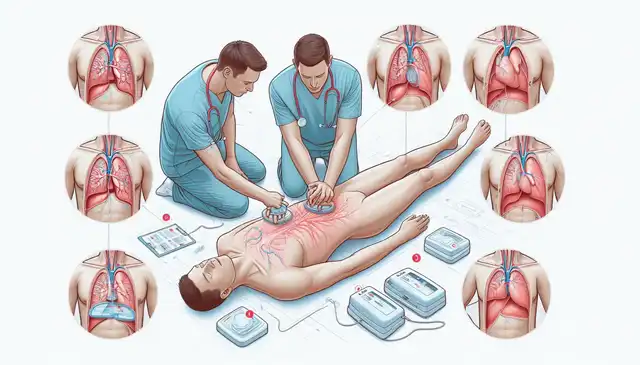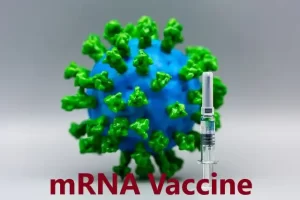Why Everyone Should Learn CPR and AED Use?
- Dispute Intensifies: Moderna Achieves Partial Victory in mRNA Patent Battle with BioNTech and Pfizer
- Harvard Study Finds Semaglutide May Increase Risk of Blindness
- Hundreds of Sperm Donations by One Man Lead to Social Issues in Australia
- Lactic Acid: The Unexpected Ally of Cancer Cells in DNA Repair and Chemoresistance
- Taking Multivitamins May Increase Mortality Rates?
- Why Everyone Should Learn CPR and AED Use?
Understanding Cardiac Arrest, Heart Attack, and Heart Failure: Why Everyone Should Learn CPR and AED Use?
- Chinese-made Drug Enters Australia: Causing at Least 20 Deaths!
- How serious is Japan’s “flesh-eating bacteria” problem?
- Taiwan 6th wave of COVID outbreak: 623 confirmed cases in one week and 38 deaths
- FDA has mandated a top-level black box warning for all marketed CAR-T therapies
- Can people with high blood pressure eat peanuts?
- What is the difference between dopamine and dobutamine?
- How long can the patient live after heart stent surgery?
Understanding Cardiac Arrest, Heart Attack, and Heart Failure: Why Everyone Should Learn CPR and AED Use?
Cardiovascular diseases, including heart attacks (myocardial infarctions), are the leading cause of death globally. According to the CDC, cardiovascular diseases are the top cause of death across different genders and almost all ethnic groups in the United States, with one person dying from these diseases every 33 seconds and a heart attack occurring every 40 seconds.
Understanding the various cardiovascular conditions is crucial, as the terms are often used interchangeably, leading to confusion. Common terms like heart attack (myocardial infarction), heart failure, and cardiac arrest each refer to distinct conditions.
Heart Attack (Myocardial Infarction): A heart attack occurs when blood flow to the heart is reduced or blocked, usually due to a blockage in the coronary arteries, causing damage to the heart muscle. The heart requires a constant blood supply to function properly, and when this supply is disrupted, the heart muscle cells begin to die. This condition is known as a heart attack.
Heart Failure: Heart failure occurs when the heart cannot pump enough blood to meet the body’s needs. This can result from various conditions, including coronary artery disease or previous heart attacks, which weaken the heart’s structure and reduce its pumping ability.
Cardiac Arrest: Cardiac arrest is a sudden loss of heart function, often due to an electrical disturbance that disrupts the heart’s rhythm. Unlike a heart attack, which is caused by a blockage, cardiac arrest results from the heart’s electrical system malfunctioning. It can be triggered by various factors, including drowning or airway blockage, and requires immediate emergency intervention.
It’s important to note that while heart attacks and heart failure can increase the risk of cardiac arrest, they are not the same. Heart attacks involve a blockage leading to reduced blood flow, whereas cardiac arrest is an electrical problem causing the heart to stop beating.

Why Learn CPR and AED Use?
The ability to perform CPR (cardiopulmonary resuscitation) and use an AED (automated external defibrillator) can save lives in cases of cardiac arrest. Immediate action is crucial, as the chances of survival decrease significantly with each passing second. Unfortunately, in the U.S., only about 40% of out-of-hospital cardiac arrest victims receive CPR before professional help arrives.
Studies show that prompt CPR can increase survival rates to 40%, and using an AED within the first minute can boost survival rates to 90%. Learning these skills is straightforward and can make a significant difference in emergency situations.
Steps to Perform CPR and Use an AED
- Ensure Safety: Check that the surrounding area is safe.
- Check for Breathing: Determine if the person is breathing. If they are not, suspect cardiac arrest and proceed with CPR.
- Call for Help: Dial emergency services and, if available, get an AED.
- Perform CPR: Begin chest compressions at a rate of 100-120 compressions per minute. Current guidelines recommend focusing on chest compressions without mouth-to-mouth resuscitation.
- Use the AED: Once the AED arrives, turn it on and follow the prompts. Attach the pads as directed, and the AED will analyze the heart’s rhythm and advise if a shock is needed.
Key Considerations
- Avoid placing AED pads directly over implanted devices like pacemakers.
- Ensure the chest is dry before attaching AED pads in cases of drowning.
- Continue CPR after the AED delivers a shock, following the device’s prompts.
Legal Protection
Many regions, including all 50 U.S. states, have Good Samaritan laws that protect individuals who provide emergency assistance from legal liability.
Conclusion
While you may never need to use CPR or an AED, having the knowledge and confidence to act can significantly improve the chances of survival for someone experiencing cardiac arrest. The more people who are trained, the greater the likelihood that a bystander can provide critical help, potentially saving lives.
Understanding Cardiac Arrest, Heart Attack, and Heart Failure: Why Everyone Should Learn CPR and AED Use
(source:internet, reference only)
Disclaimer of medicaltrend.org
Important Note: The information provided is for informational purposes only and should not be considered as medical advice.



